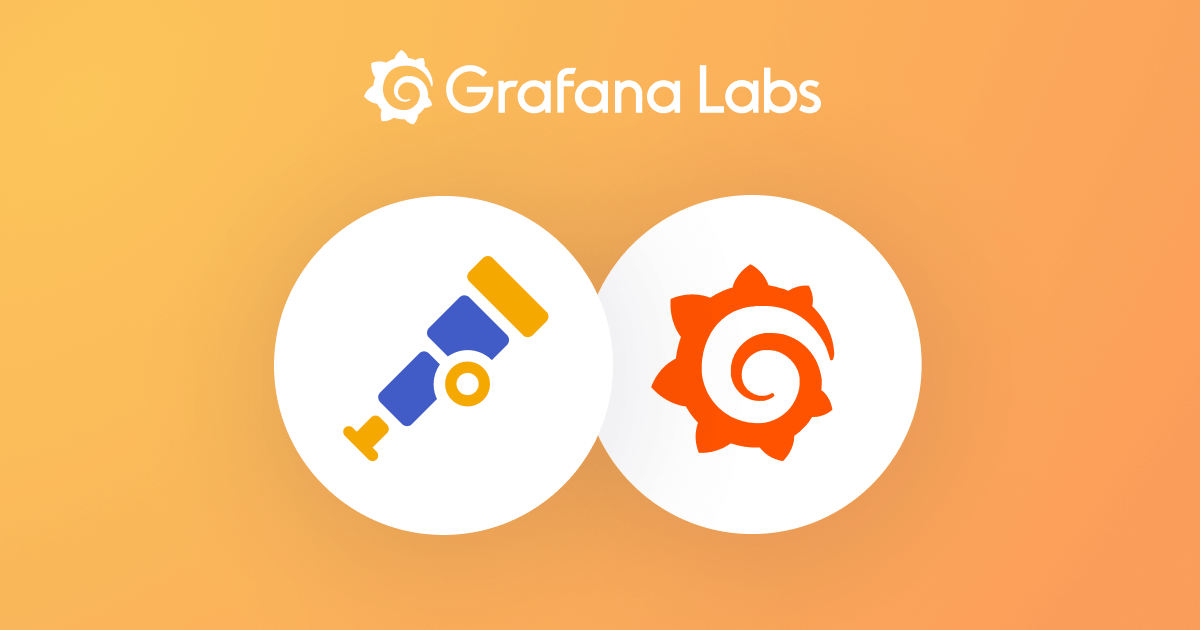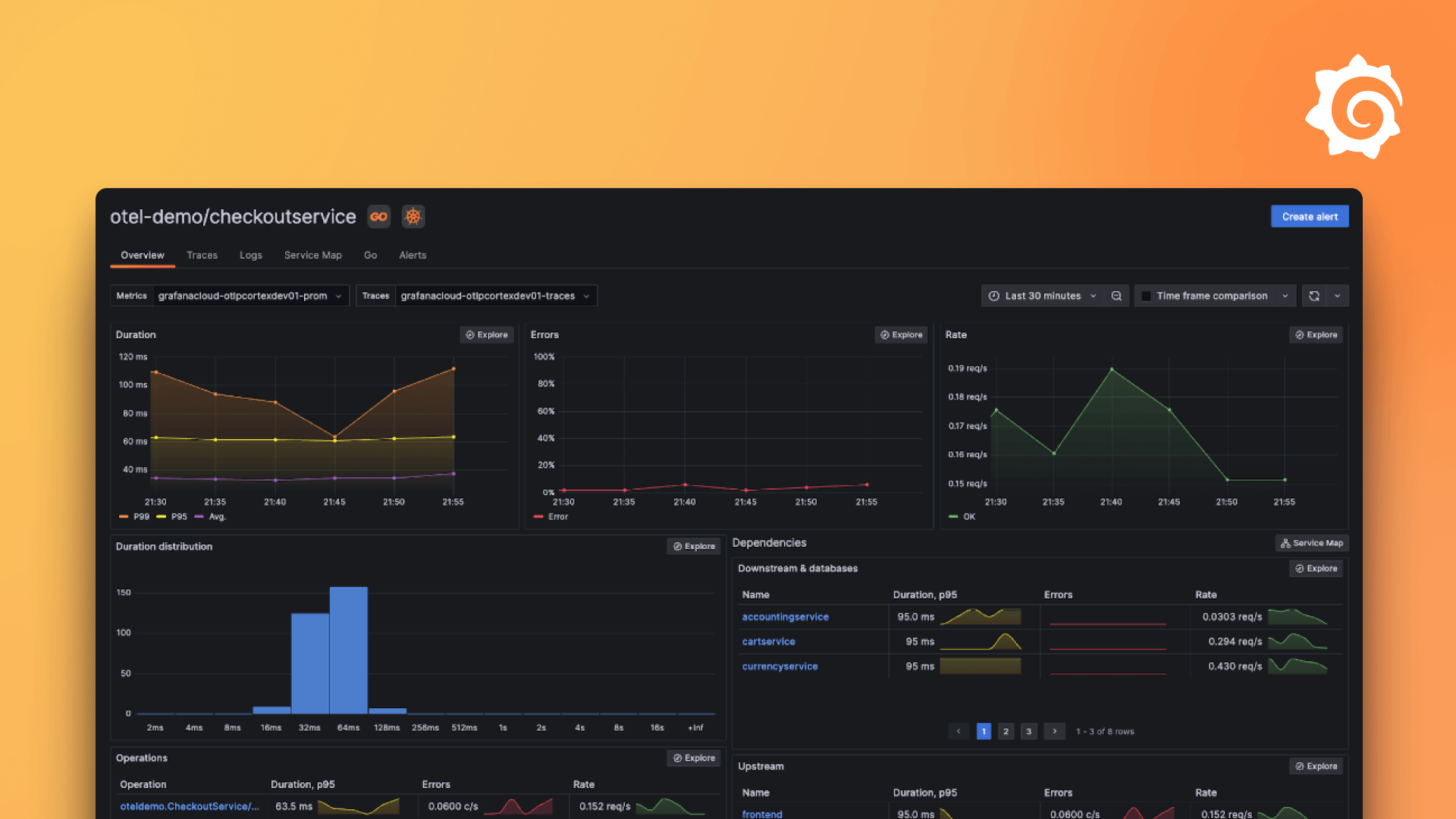从 Grafana Agent Operator 迁移到 Grafana Alloy
您可以从 Grafana Agent Operator 迁移到 Alloy。
- 监控类型(
PodMonitor、ServiceMonitor、Probe、ScrapeConfig和PodLogs)均由 Alloy 原生支持。 - Grafana Agent Operator 中用于部署 Grafana Agent 的部分,即
GrafanaAgent、MetricsInstance和LogsInstanceCRD,已被废弃。
使用 Helm 部署 Alloy
创建一个
values.yaml文件,其中包含部署 Alloy 的选项。您可以从默认值开始并根据需要进行自定义,或者从以下代码片段开始,这应该是一个不错的起点,它与 Grafana Agent Operator 的功能类似。alloy: configMap: create: true clustering: enabled: true controller: type: 'statefulset' replicas: 2 crds: create: false此配置使用内置的集群功能将 Alloy 部署为
StatefulSet,以便在所有 Alloy Pod 之间分配抓取任务。这是众多可能的部署模式之一。例如,您可能希望使用
DaemonSet来收集主机级别的日志或指标。有关不同拓扑的更多详细信息,请参阅 Alloy 的部署指南。创建一个 Alloy 配置文件
config.alloy。在下一步中,当您转换
MetricsInstance时,将添加到此配置中。您可以根据需要向此文件添加任何额外的配置。安装 Grafana Helm 仓库
helm repo add grafana https://grafana.github.io/helm-charts helm repo update创建一个 Helm 发布。您可以随意命名该发布。以下命令将在
monitoring命名空间中安装一个名为alloy-metrics的发布。helm upgrade alloy-metrics grafana/alloy -i -n monitoring -f values.yaml --set-file alloy.configMap.content=config.alloy此命令使用
--set-file标志将配置文件作为 Helm 值传递,以便您可以继续将其作为常规 Alloy 配置文件进行编辑。
将 MetricsInstance 转换为 Alloy 组件
MetricsInstance 资源主要定义
- Grafana Agent 应将指标发送到的远程端点。
- 此 Alloy 应发现的
PodMonitor、ServiceMonitor、ScrapeConfig和Probe资源。
您可以在 Alloy 中使用 prometheus.remote_write、prometheus.operator.podmonitors、prometheus.operator.servicemonitors 和 prometheus.operator.probes 组件来实现这些功能。
以下 Alloy 语法示例等同于操作员指南中的 MetricsInstance。
// read the credentials secret for remote_write authorization
remote.kubernetes.secret "credentials" {
namespace = "monitoring"
name = "primary-credentials-metrics"
}
prometheus.remote_write "primary" {
endpoint {
url = "https://<PROMETHEUS_URL>/api/v1/push"
basic_auth {
username = convert.nonsensitive(remote.kubernetes.secret.credentials.data["username"])
password = remote.kubernetes.secret.credentials.data["password"]
}
}
}
prometheus.operator.podmonitors "primary" {
forward_to = [prometheus.remote_write.primary.receiver]
// leave out selector to find all podmonitors in the entire cluster
selector {
match_labels = {instance = "primary"}
}
}
prometheus.operator.servicemonitors "primary" {
forward_to = [prometheus.remote_write.primary.receiver]
// leave out selector to find all servicemonitors in the entire cluster
selector {
match_labels = {instance = "primary"}
}
}替换以下内容
<PROMETHEUS_URL>:您希望将指标发送到的端点。
此配置发现集群中所有匹配标签选择器 instance=primary 的 PodMonitor、ServiceMonitor、ScrapeConfig 和 Probe 资源。然后,它从目标中抓取指标并将它们转发到您的远程写入端点。
如果您在 MetricsInstance 资源中使用了其他功能,您可能需要进一步自定义此配置。有关更多信息,请参阅相关组件的文档:
remote.kubernetes.secretprometheus.remote_writeprometheus.operator.podmonitorsprometheus.operator.servicemonitors- [
prometheus.operator.scrapeconfigs][prometheus.operator.scrapeconfigs] prometheus.operator.probesprometheus.scrape
收集日志
当前建议是创建一个额外的 Alloy DaemonSet 部署来抓取日志。
Alloy 具有可以直接从 Kubernetes API 抓取 Pod 日志的组件,而无需 DaemonSet 部署。这些组件目前仍被视为实验性功能,如果您想尝试,请参阅
loki.source.kubernetes和loki.source.podlogs的文档。
这些值与 Grafana Agent Operator 部署日志时使用的值接近
alloy:
configMap:
create: true
clustering:
enabled: false
controller:
type: 'daemonset'
mounts:
# -- Mount /var/log from the host into the container for log collection.
varlog: true此命令将在 monitoring 命名空间中安装一个名为 alloy-logs 的发布
helm upgrade alloy-logs grafana/alloy -i -n monitoring -f values-logs.yaml --set-file alloy.configMap.content=config-logs.alloy这个简单的配置会抓取每个节点上每个 Pod 的日志
// read the credentials secret for remote_write authorization
remote.kubernetes.secret "credentials" {
namespace = "monitoring"
name = "primary-credentials-logs"
}
discovery.kubernetes "pods" {
role = "pod"
// limit to pods on this node to reduce the amount you need to filter
selectors {
role = "pod"
field = "spec.nodeName=" + sys.env("<HOSTNAME>")
}
}
discovery.relabel "pod_logs" {
targets = discovery.kubernetes.pods.targets
rule {
source_labels = ["__meta_kubernetes_namespace"]
target_label = "namespace"
}
rule {
source_labels = ["__meta_kubernetes_pod_name"]
target_label = "pod"
}
rule {
source_labels = ["__meta_kubernetes_pod_container_name"]
target_label = "container"
}
rule {
source_labels = ["__meta_kubernetes_namespace", "__meta_kubernetes_pod_name"]
separator = "/"
target_label = "job"
}
rule {
source_labels = ["__meta_kubernetes_pod_uid", "__meta_kubernetes_pod_container_name"]
separator = "/"
action = "replace"
replacement = "/var/log/pods/*$1/*.log"
target_label = "__path__"
}
rule {
action = "replace"
source_labels = ["__meta_kubernetes_pod_container_id"]
regex = "^(\\w+):\\/\\/.+$"
replacement = "$1"
target_label = "tmp_container_runtime"
}
}
local.file_match "pod_logs" {
path_targets = discovery.relabel.pod_logs.output
}
loki.source.file "pod_logs" {
targets = local.file_match.pod_logs.targets
forward_to = [loki.process.pod_logs.receiver]
}
// basic processing to parse the container format. You can add additional processing stages
// to match your application logs.
loki.process "pod_logs" {
stage.match {
selector = "{tmp_container_runtime=\"containerd\"}"
// the cri processing stage extracts the following k/v pairs: log, stream, time, flags
stage.cri {}
// Set the extract flags and stream values as labels
stage.labels {
values = {
flags = "",
stream = "",
}
}
}
// if the label tmp_container_runtime from above is docker parse using docker
stage.match {
selector = "{tmp_container_runtime=\"docker\"}"
// the docker processing stage extracts the following k/v pairs: log, stream, time
stage.docker {}
// Set the extract stream value as a label
stage.labels {
values = {
stream = "",
}
}
}
// drop the temporary container runtime label as it is no longer needed
stage.label_drop {
values = ["tmp_container_runtime"]
}
forward_to = [loki.write.loki.receiver]
}
loki.write "loki" {
endpoint {
url = "https://<LOKI_URL>/loki/api/v1/push"
basic_auth {
username = convert.nonsensitive(remote.kubernetes.secret.credentials.data["username"])
password = remote.kubernetes.secret.credentials.data["password"]
}
}
}替换以下内容
<LOKI_URL>:您的 Loki 实例的端点。
日志子系统非常强大,提供了许多处理日志的选项。更多详细信息,请参阅组件文档。
集成
Alloy 不支持 Integration CRD。但是,所有 Grafana Agent Static 模式的集成在 prometheus.exporter 命名空间中都有对应的组件。参考文档应该能帮助您将这些集成转换为对应的 Alloy 组件。



